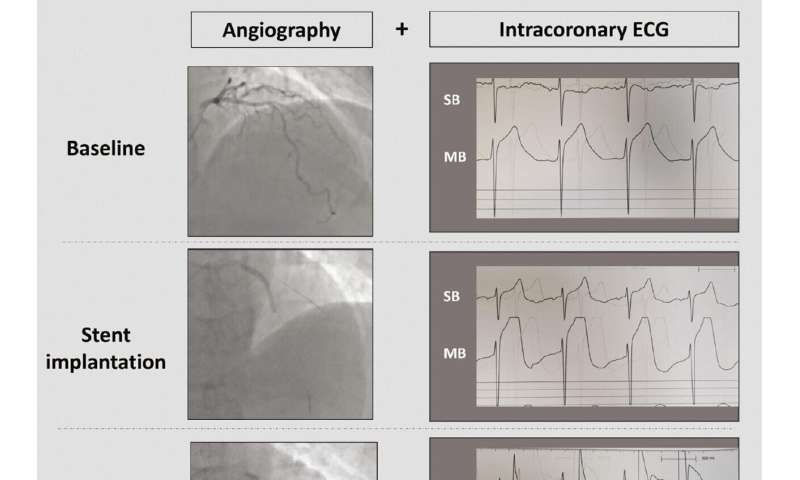Intracoronary electrocardiography-guided strategy for the treatment of coronary bifurcation lesions

Revascularization of bifurcation lesions remains an interventional challenge. Intracoronary electrocardiograms can predict the functional significance of side branch stenosis after bifurcation stenting.
A new paper published in Cardiovascular Innovations and Applications evaluates the effects of an intracoronary ECG electrocardiography (icECG)–guided revascularization strategy compared to the currently accepted standard of care on the clinical outcomes of patients after coronary bifurcation stenting.
Patients with coronary bifurcation lesions who underwent percutaneous revascularization were enrolled in a prospective all-comers' registry. Clinical outcomes were compared between patients who underwent icECG-guided revascularization versus the current standard of care (SOC), provisional stenting.
A total of 768 patients were included in the analysis: 349 were treated with an icECG-guided strategy, and 419 received SOC. The overall all-cause death rate was 23.2%, and the cardiovascular death rate was 15.9%. Patients with icECG guidance had significantly lower all-cause mortality (20.3% vs. 25.5% for icECG vs. SOC, log-rank P = 0.006) and cardiovascular mortality (12.6% vs. 18.6% for icECG vs. SOC, log-rank P = 0.004). The decrease in mortality was most pronounced in patients with no increase or a moderate increase in troponin post-PCI, or with higher-than-normal baseline troponin concentrations.
More information:
Dobrin Vassilev et al, Intracoronary Electrocardiography-guided Strategy for the Treatment of Coronary Bifurcation Lesions, Cardiovascular Innovations and Applications (2023). DOI: 10.15212/CVIA.2023.0055
Provided by Compuscript Ltd